Savannah Is Accessible—Here’s the Proof
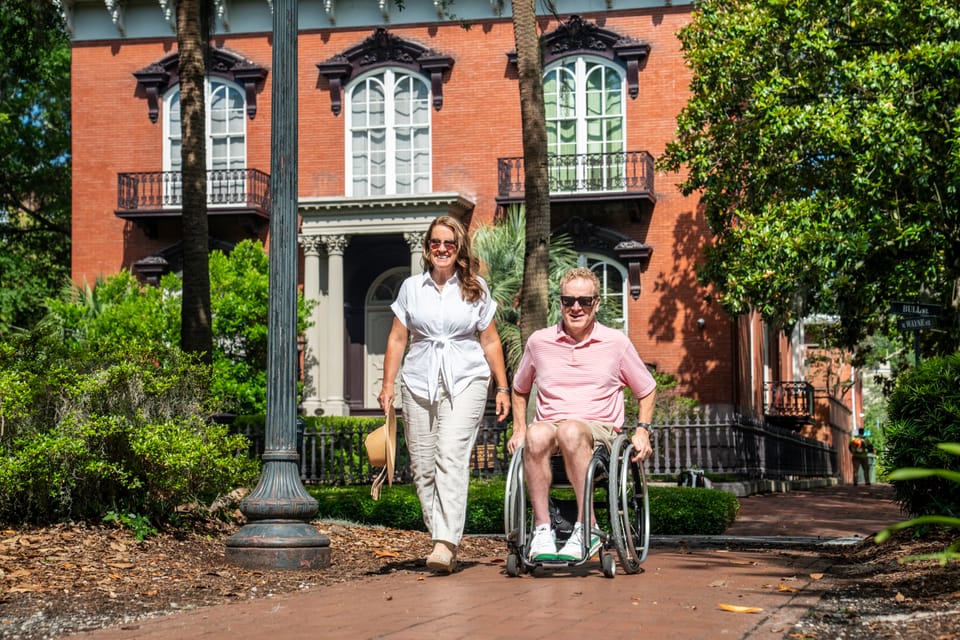
Savannah is known for its cobblestones, historic buildings, and centuries-old oak trees draped in Spanish moss. It’s charming, but if you use a wheelchair or travel with accessibility needs, your first thought might be: is Savannah even accessible? For years, the assumption has been “not really", due to it's historical nature and infrastructure. But here’s the truth—Savannah is more accessible than you think, and we’re here to tell you why.
What's Ahead?
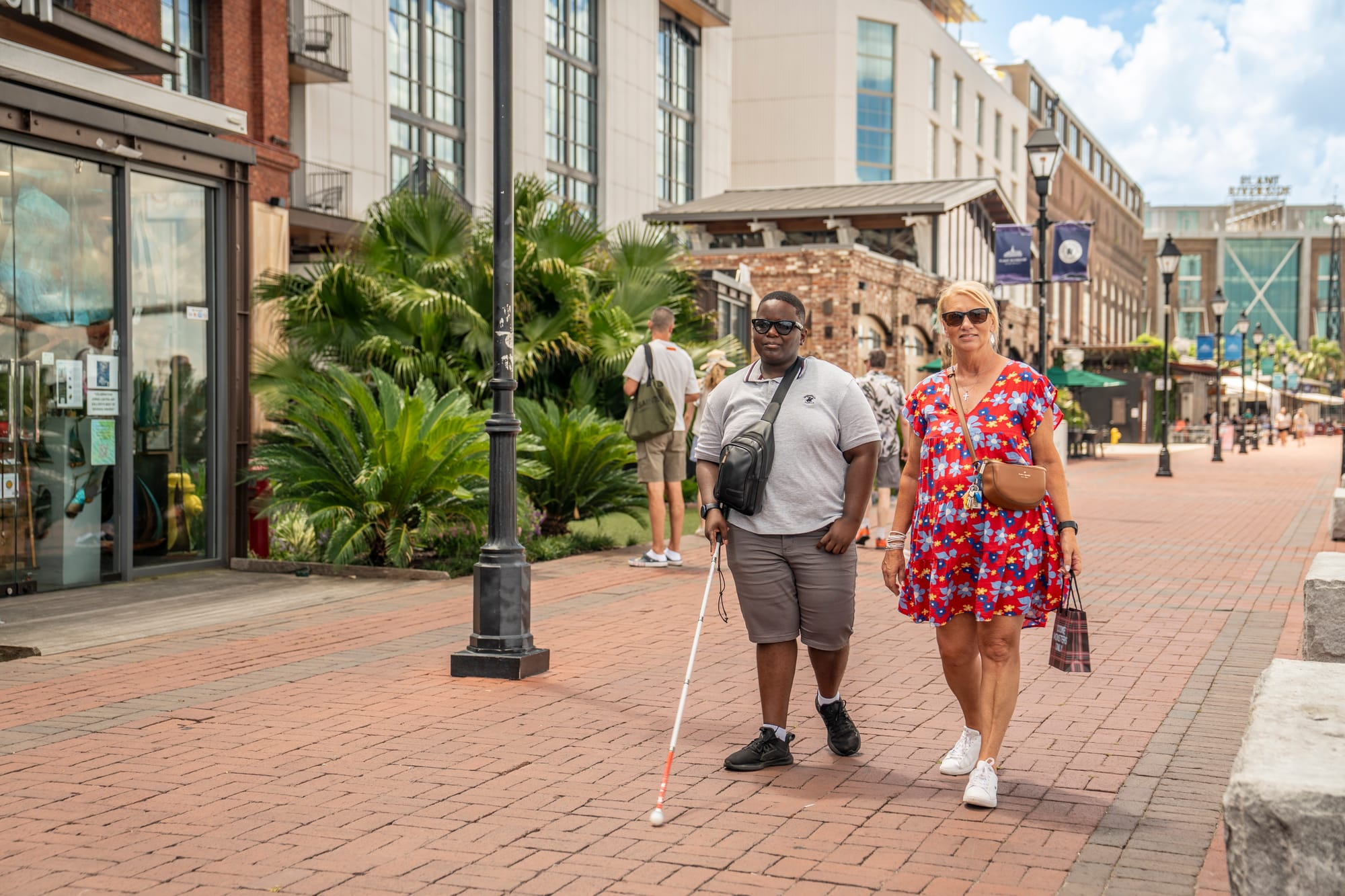
Savannah at a Glance
Savannah is a Southern destination that blends history, culture, and coastal charm in a way that feels unique compared to the rest of the south. Walk (or roll) through the Historic District and you’ll be surrounded by 18th- and 19th-century architecture, cobblestone streets, and those famous live oaks draped in Spanish moss. The city is built around 23 historic squares, each one a green oasis where locals gather, musicians play, and visitors pause to soak in the atmosphere.
The Savannah Riverfront is just as lively. Here, old cotton warehouses have been transformed into restaurants, galleries, and shops, all overlooking the Savannah River where container ships glide past within arm’s reach. There’s a laid-back coastal vibe that makes the city feel both relaxing and full of life at the same time. Festivals happen year-round, from food and music to art and culture, giving visitors plenty of reasons to return in every season.
Food is central to Savannah’s identity. From Southern comfort classics to fresh coastal seafood, dining here is an experience in itself—and increasingly, restaurants are making sure those experiences are accessible to everyone. Pair that with the city’s thriving arts community, live performances, and welcoming locals, and you’ve got a destination that’s easy to fall in love with.
This is the backdrop to the conversation about accessibility. Savannah’s beauty and culture make people want to come—but for years, many travelers with disabilities wondered if they could. That’s why talking honestly about accessibility matters, and why proving it is so important.
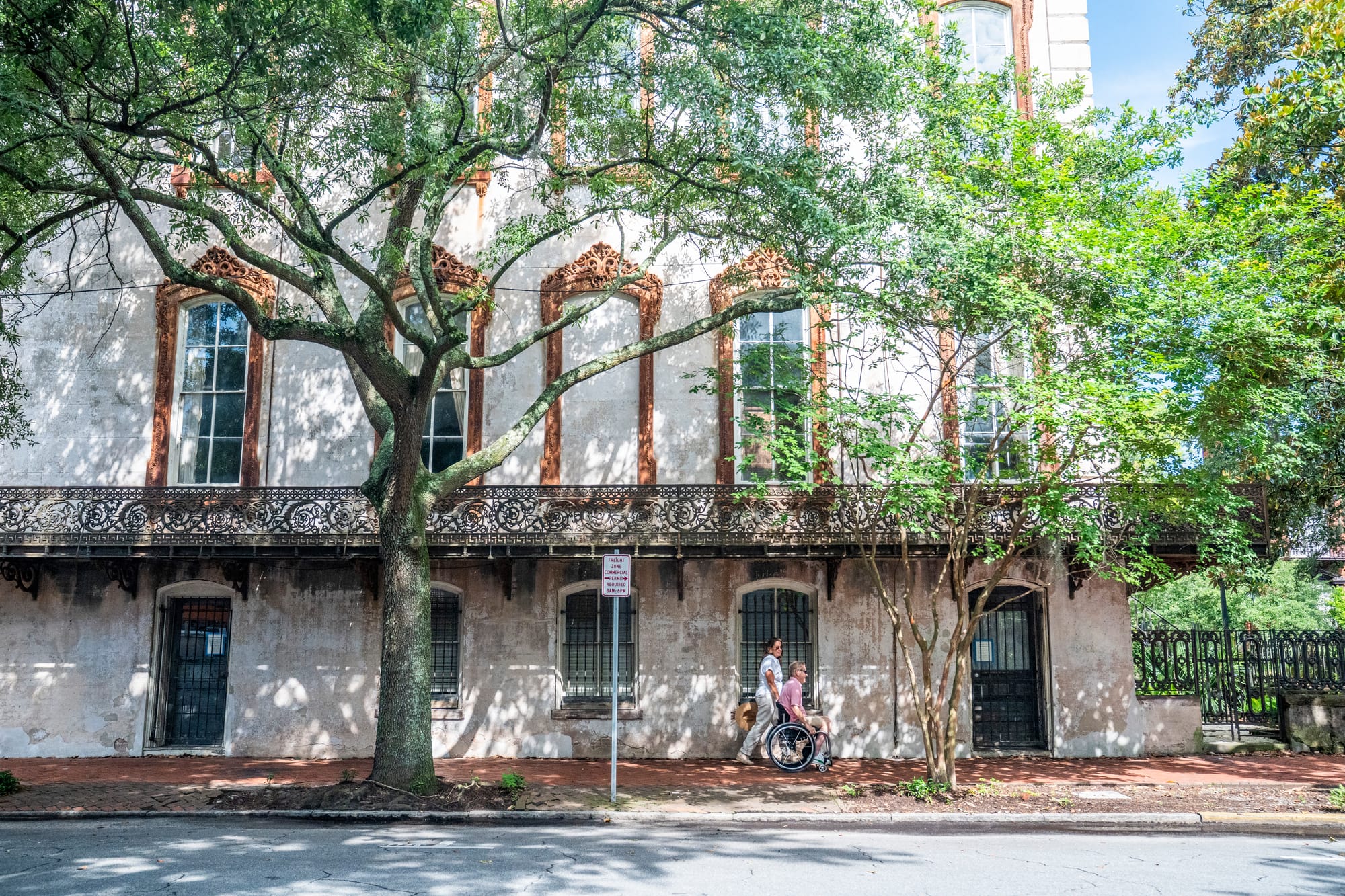
The Accessibility Perception
Savannah’s beauty and history are part of what make it so appealing, but they also shape how accessibility looks in the city. The Historic District is where most challenges appear. Cobblestone and brick streets—especially near River Street—add atmosphere but can be bumpy for manual wheelchair users. The roots of Savannah’s live oaks sometimes push up sidewalks, leaving uneven patches.
That doesn’t mean the city is closed off. Many of Savannah’s 23 squares have been updated with curb cuts, and popular routes are paved and easier to roll on. If you hit cobblestones, there’s often a parallel smooth sidewalk that offers an alternative. The city’s compact size also helps—attractions, shops, and restaurants are close together, so you’re rarely navigating difficult terrain for long. The shaded squares double as natural rest stops along the way.
Crosswalks are another mixed picture. Some intersections don’t yet have tactile paving or auditory signals, but crossings in the busiest parts of downtown have been steadily improved. For travelers who are blind or low-vision, planning routes through central areas like Forsyth Park or City Market is often the smoothest option.
Historic buildings can bring limitations too—narrow entrances or preserved facades mean not every doorway is step-free. Still, major attractions such as museums, visitor centers, and many restaurants have been renovated with accessibility in mind. Calling ahead for specific venues is always a good idea, and Savannah’s hospitality community is generally ready to accommodate.
And if you use ASL, it’s best to book interpreters in advance—just like you would in most destinations—to make sure services are available when you need them.
So yes, Savannah has quirks. But between the compact downtown, updated squares, and alternative routes, accessibility here is more practical than many assume. With realistic expectations and a bit of planning, you can experience the Southern charm without being sidelined by barriers.
Is it worth visiting? We say yes, 100%.
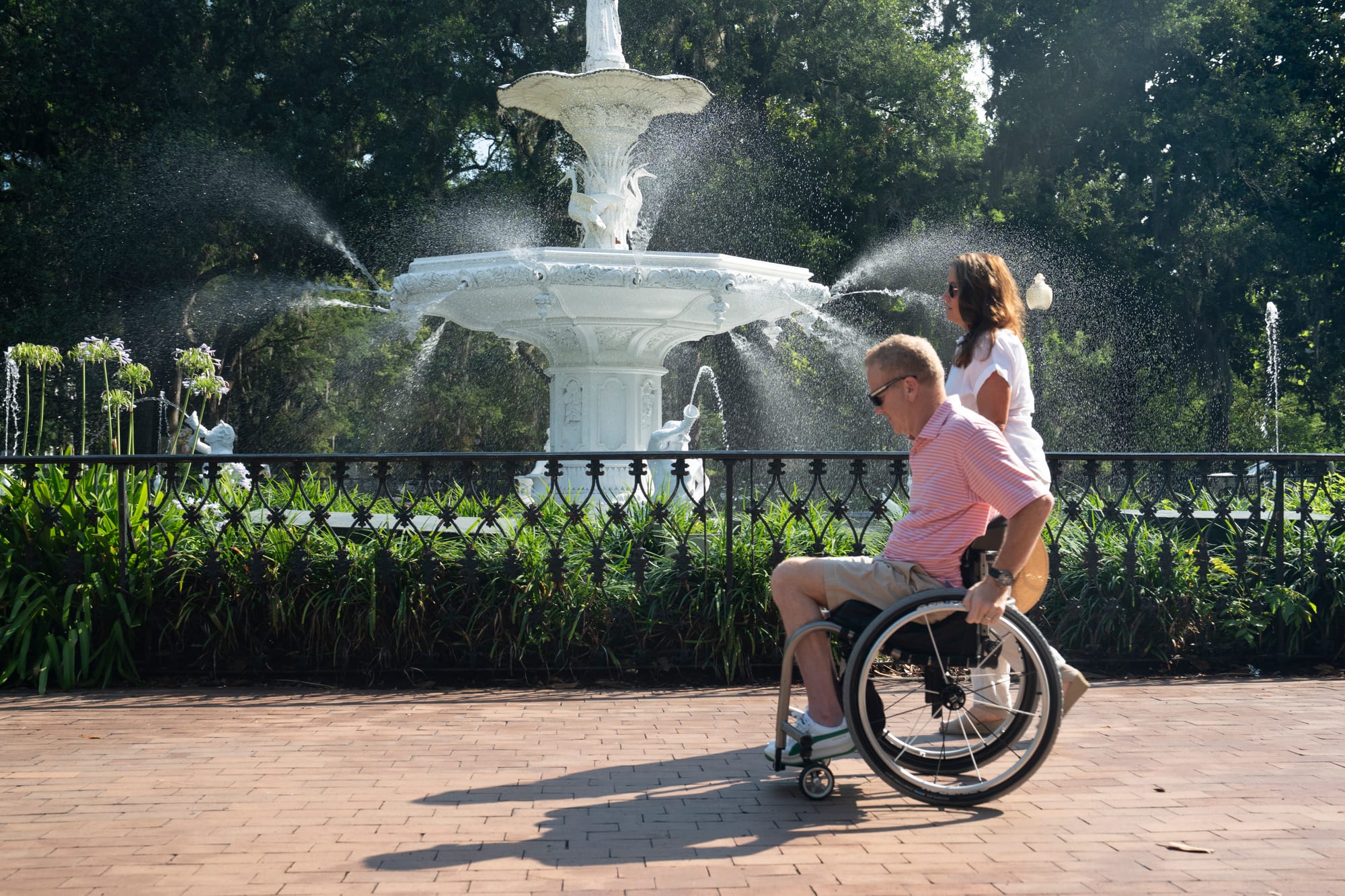
What Savannah Is Doing
Savannah is making accessibility a focus, and you can see it in the partnerships, the transportation system, and even in city planning. Visit Savannah has partnered with Wheel the World to make sure travelers have real, detailed information before they arrive. Wheel the World is an accessible travel platform that verifies accessibility through on‑site visits, ensuring travelers with disabilities have the accurate information needed to make an informed decision.
For example, each hotel listing you see on Wheel the World has 0ver 200 measurements and data points relevant to accessibility. Some examples of aspects that get measured:
- Bed height and space under the bed
- Bathroom turning space and whether there’s a roll‑in shower or tub.
- Grab bars and showerhead details.
- Entrance type
- Door widths
- And so much more
Accessibility is not one-size-fits-all. It's deeply personal. Having detailed and accurate information empowers travelers with disabilities to make the best decision for their unique needs.
Photos are also taken so you can see visuals alongside accessibility information, so you know what to expect before you book. That clarity is the difference between worrying and traveling with confidence.
Not only are hotels mapped, but so are attractions, parks, restaurants, and even transportation options. Travelers with disabilities can now find all of these options in Savannah with detailed information on accessibility.
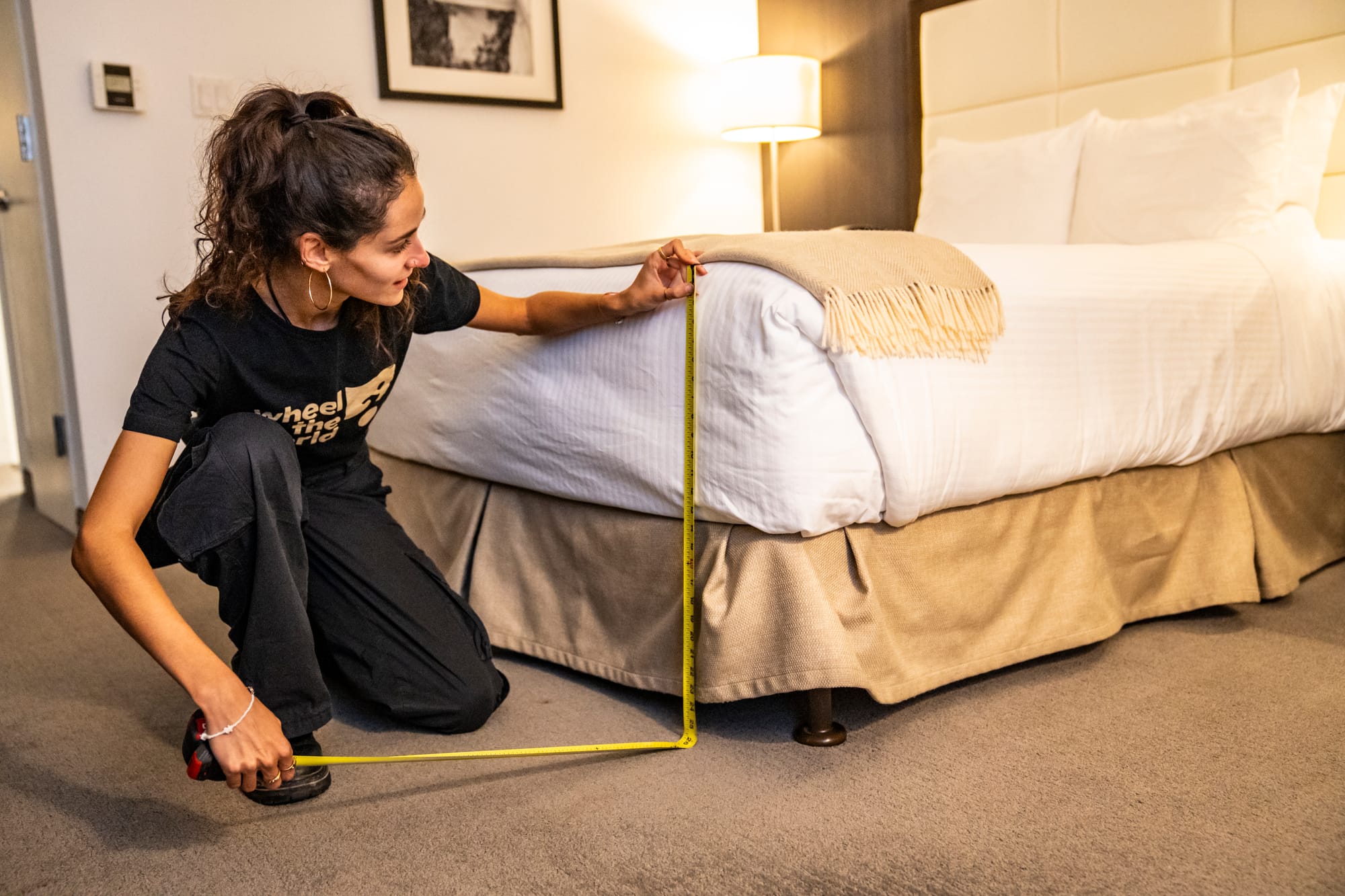
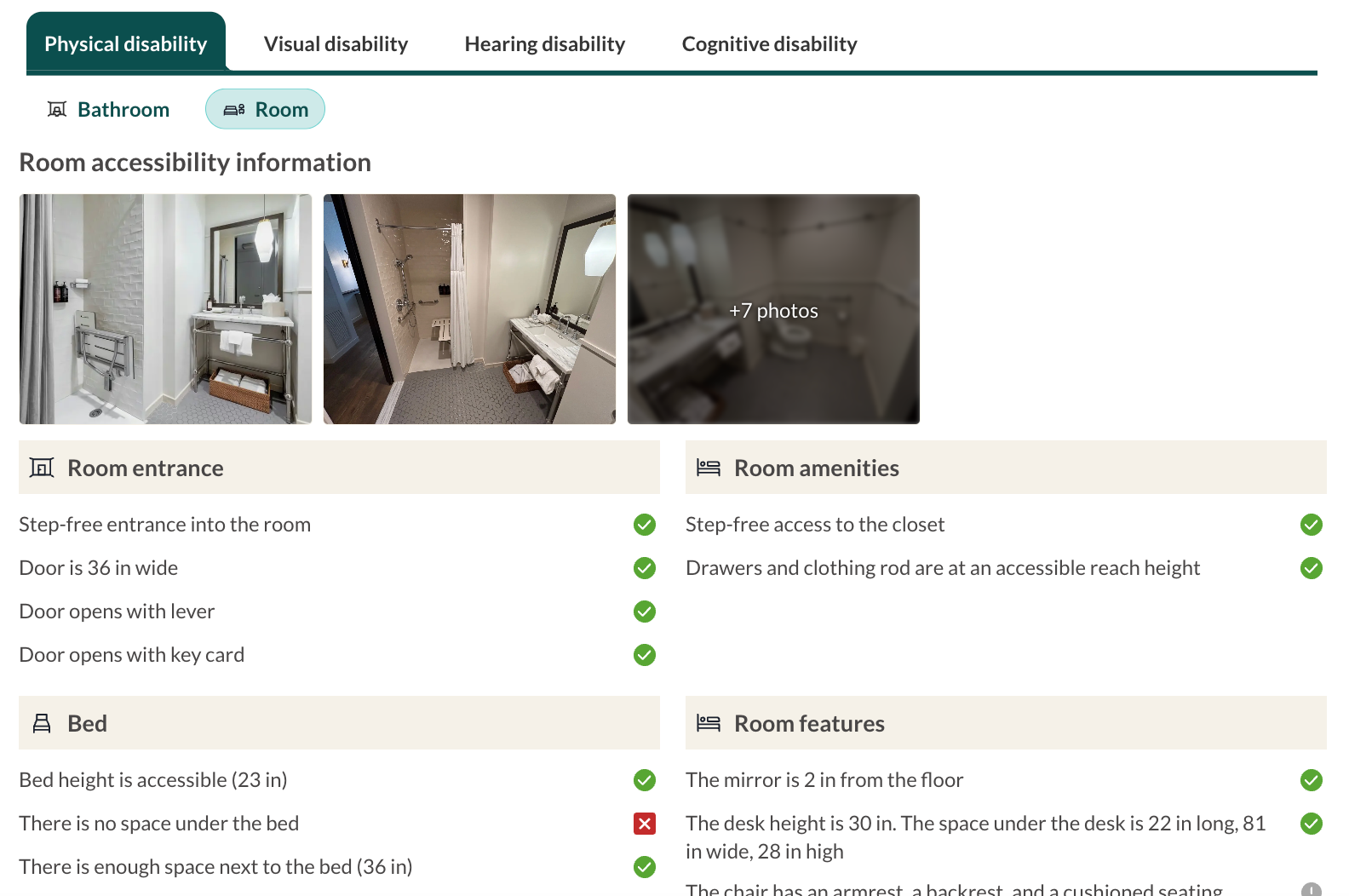
The city has been investing in infrastructure as well. Chatham Area Transit (CAT) operates a wheelchair‑accessible bus fleet and provides paratransit service for those who qualify. The free DOT shuttle loops through downtown, and the Savannah Belles Ferry is ADA compliant, giving you a smooth way to cross the river without steps. Even River Street, known for its cobblestones, has accessible entry points—including an elevator next to the Hyatt Regency that takes you from the bluff down to the waterfront.
Community efforts are also part of the story. The mayor’s Savannability Task Force brings together people with disabilities, advocates, and city officials to identify priorities and push improvements forward. Local groups like the Savannah‑Chatham Council on Disability Issues continue to advise on policies, ensuring accessibility is part of long‑term planning and not just short‑term fixes.
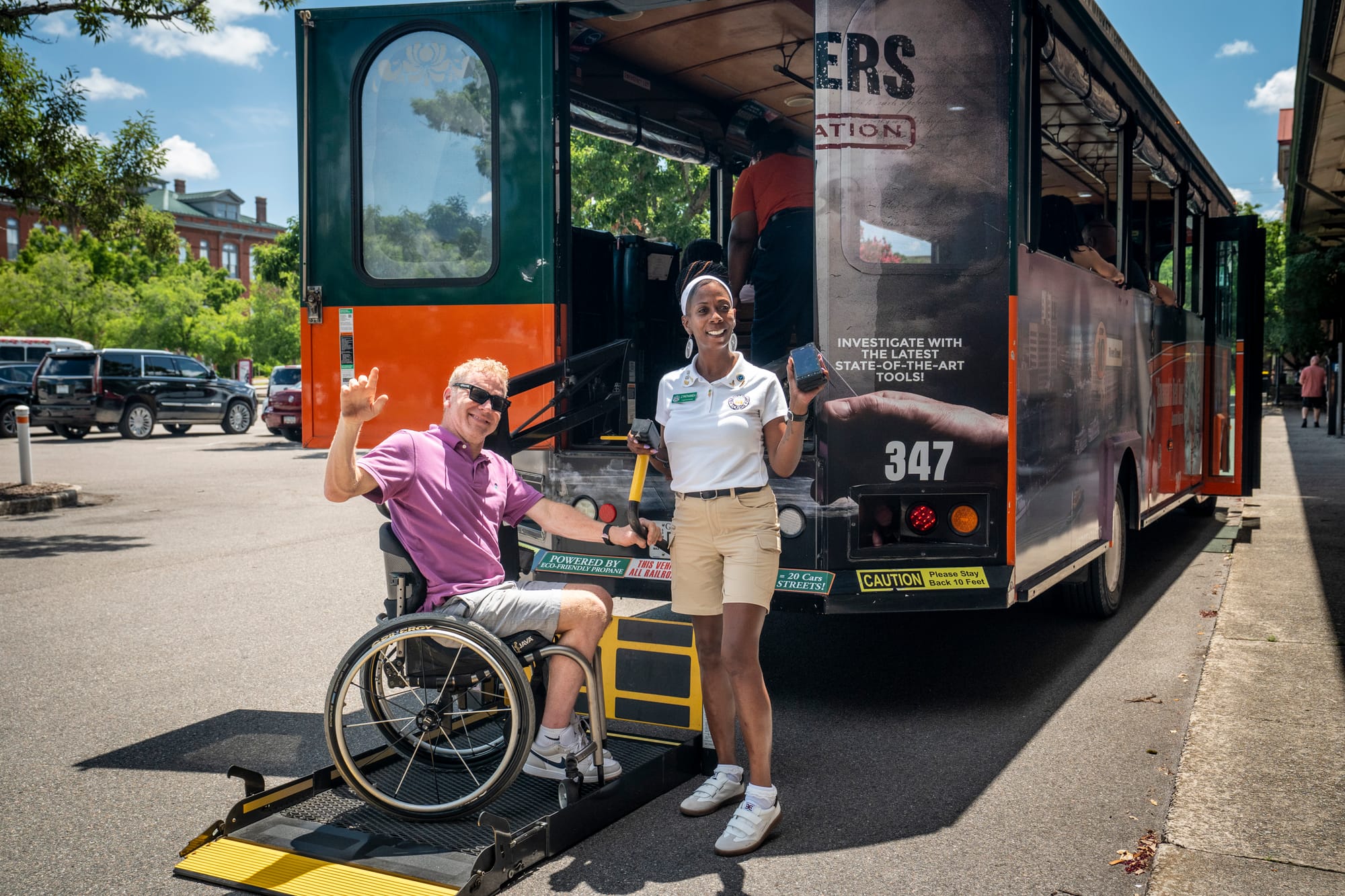
Accessible Savannah in 3 Days: A Long Weekend Itinerary
Savannah has plenty of accessible hotels, attractions, and restaurants already mapped on Wheel the World, but sometimes it helps to see how it all fits together. So, what does an accessible trip to Savannah actually look like? Here’s a suggested long weekend itinerary that highlights the city’s Southern charm while showing you just how doable it really is.
Day 1: Settle In & See the City
- Getting downtown — Arriving is pretty simple. If you’re driving, you’ll find accessible parking throughout the Historic District, so you can roll right into the action. Flying in? The Savannah/Hilton Head International Airport is fully accessible, and the CAT Airport Express will get you downtown for just $5 each way. From there, you can jump on the free DOT shuttle or grab a taxi or rideshare—accessible vehicles are available if you need them.
- Check in downtown — We recommend staying right in the Historic District. It puts you close to everything, so you can spend more time enjoying Savannah and less time figuring out transportation. Verified accessible hotels like The Alida, Hyatt Regency Savannah, and Marriott Savannah Riverfront are all solid options, with detailed accessibility info available so you know what to expect before you book.
- Get oriented on the Old Town Trolley — A great way to kick things off is with the Old Town Trolley. It’s wheelchair-accessible, and the narrated tour gives you a relaxed introduction to Savannah’s squares, neighborhoods, and history. Think of it as your rolling crash course in the city.
- Explore City Market — In the afternoon, wander over to City Market. This open-air hub is step-free, lively, and full of character, with local art, shops, and usually a bit of live music drifting through the square. For dinner, Belford’s Savannah Seafood & Steaks is right there and fully verified for accessibility.
- Evening on River Street — Wrap up your first day along the Savannah Riverfront. Use the Hyatt Regency’s elevator to avoid the cobblestones and enjoy the view as you roll onto River Street. Grab a snack or a souvenir, and don’t leave without a stop at River Street Sweets.
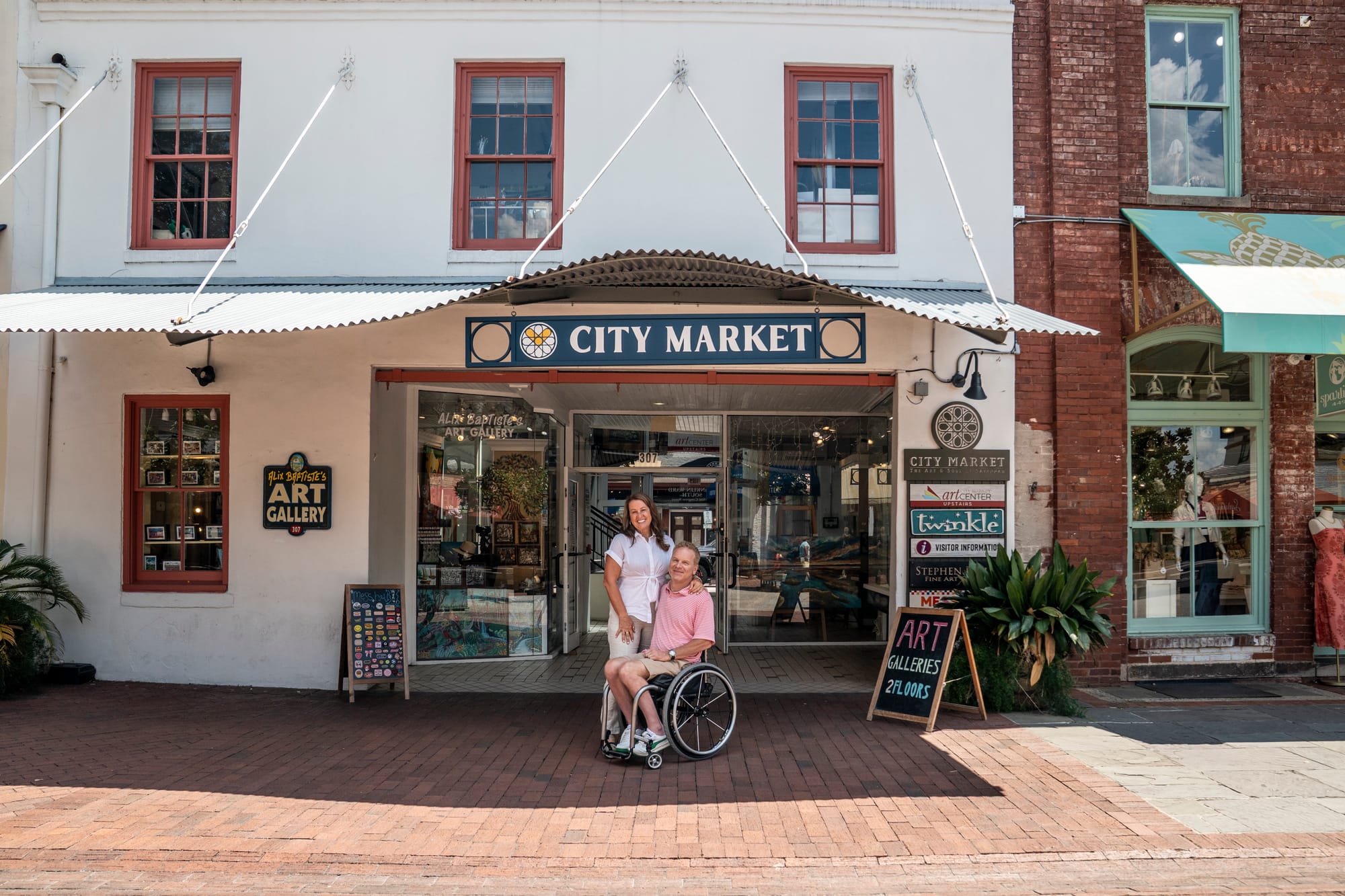
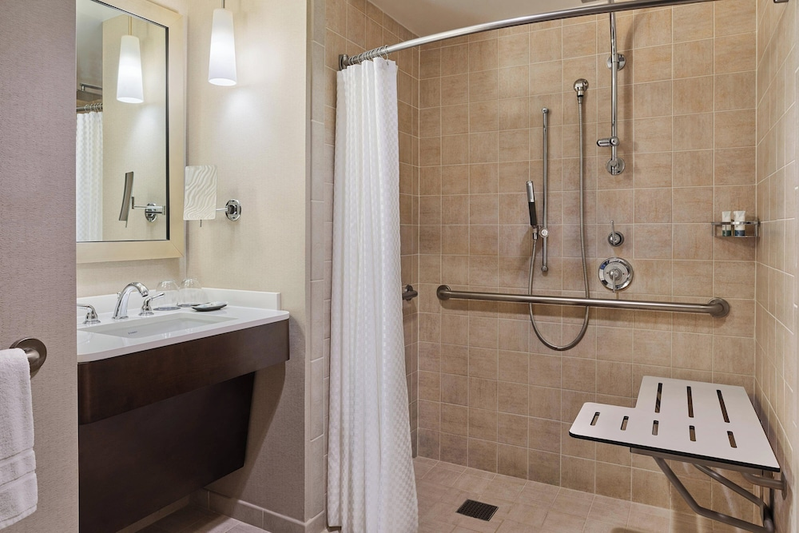
Day 2: Parks, Museums & River Views
- Morning in Forsyth Park — No trip to Savannah feels complete without a visit to Forsyth Park. It’s 30 acres of green space right in the Historic District, with wide paved paths that make it easy to roll beneath those famous Spanish moss–draped oaks. Stop by the Fragrant Garden for the Blind, which is designed to be enjoyed through all the senses. When you’re ready for brunch, Collins Quarter at Forsyth is right in the park and serves a menu that locals love.
- Cultural afternoon — Savannah’s museums are as accessible as they are fascinating. If you like history with a twist, the American Prohibition Museum takes you back to the 1920s with interactive exhibits. Art lovers will feel right at home at the Jepson Center, a modern, step-free museum with rotating exhibitions. And if you’re interested in Girl Scouts history, the Juliette Gordon Low Birthplace is fully accessible and offers guided tours.
- Afternoon treat — After a few hours indoors, it’s the perfect time to roll over to Leopold’s Ice Cream. This old-fashioned soda fountain has been a Savannah favorite for over a century. The line can be long, but it moves quickly—and it’s worth every minute.
- Evening on the water — End your day with a Savannah Riverboat Cruise. The ships are accessible with ramps and restrooms, and they make for a relaxing evening with dinner, music, and the city skyline glowing at sunset.
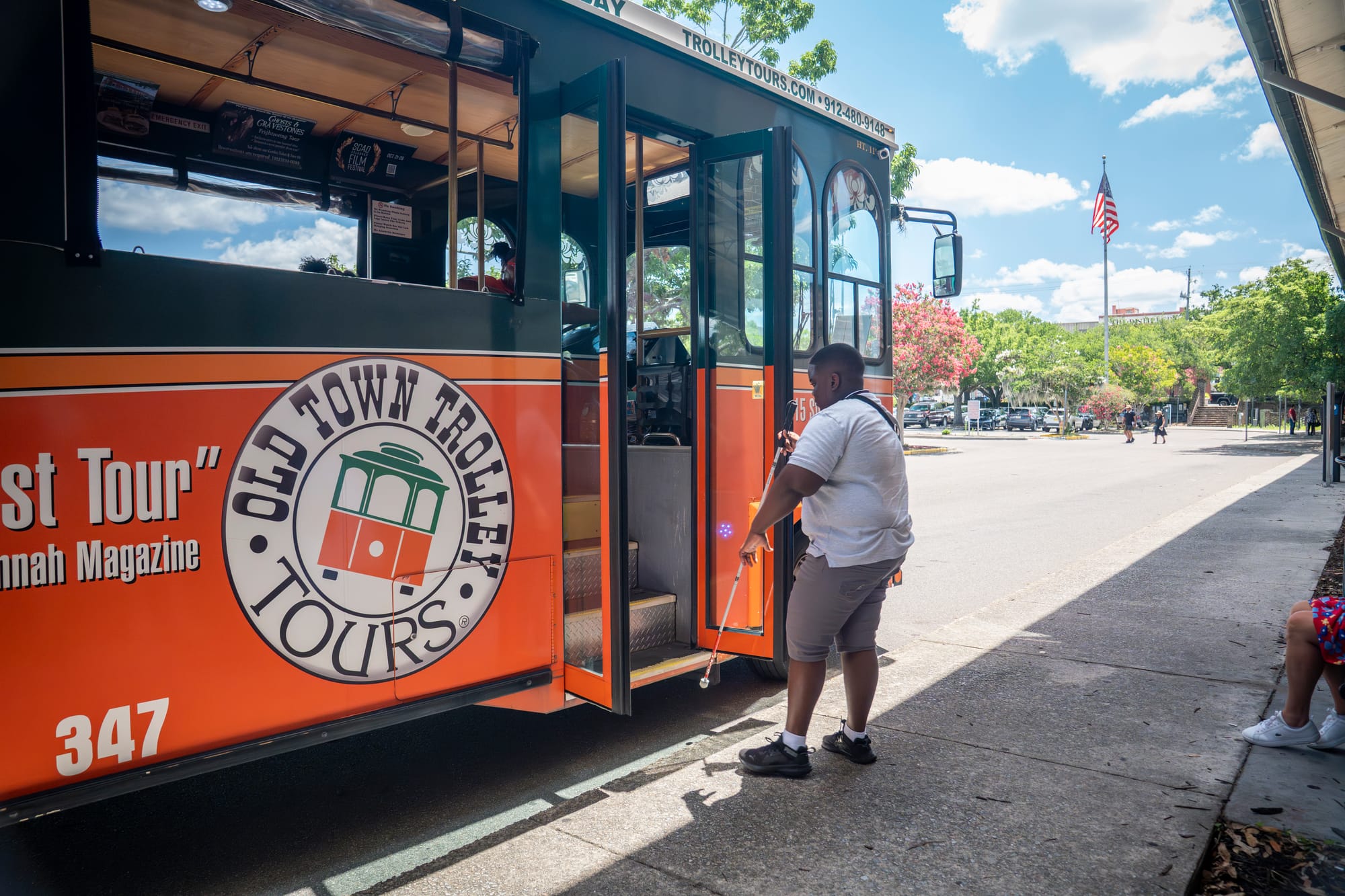
Day 3: Nature & Neighborhood Flavor
- Morning escape to Skidaway — Trade the city streets for maritime forest at Skidaway Island State Park. It’s about a 20–25 minute drive from downtown, so you’ll need a car or an accessible rental vehicle, but the reward is peaceful ADA-compliant boardwalk trails surrounded by nature. It’s a quiet way to start your last day.
- Lunch in the Starland District — Head back into town and stop at Starland Yard, an accessible food truck park with spacious seating and a rotating lineup of eats. If you’re in the mood for something different, Zunzi’s Takeout & Catering offers bold, globally inspired flavors in a laid-back setting.
- Afternoon at Ships of the Sea — Spend your afternoon at the Ships of the Sea Maritime Museum. Housed in a historic mansion but adapted for accessibility, it mixes maritime history with beautiful gardens and exhibits that are easy to explore.
- Evening wrap-up — For your last night, choose your own adventure. If you like a little mystery, join a Ghost City Tour—accessible and full of Savannah’s spooky stories. Or, if you’d rather keep things light, hop back on the Old Town Trolley for an evening ride to revisit your favorite sights with less daytime bustle.
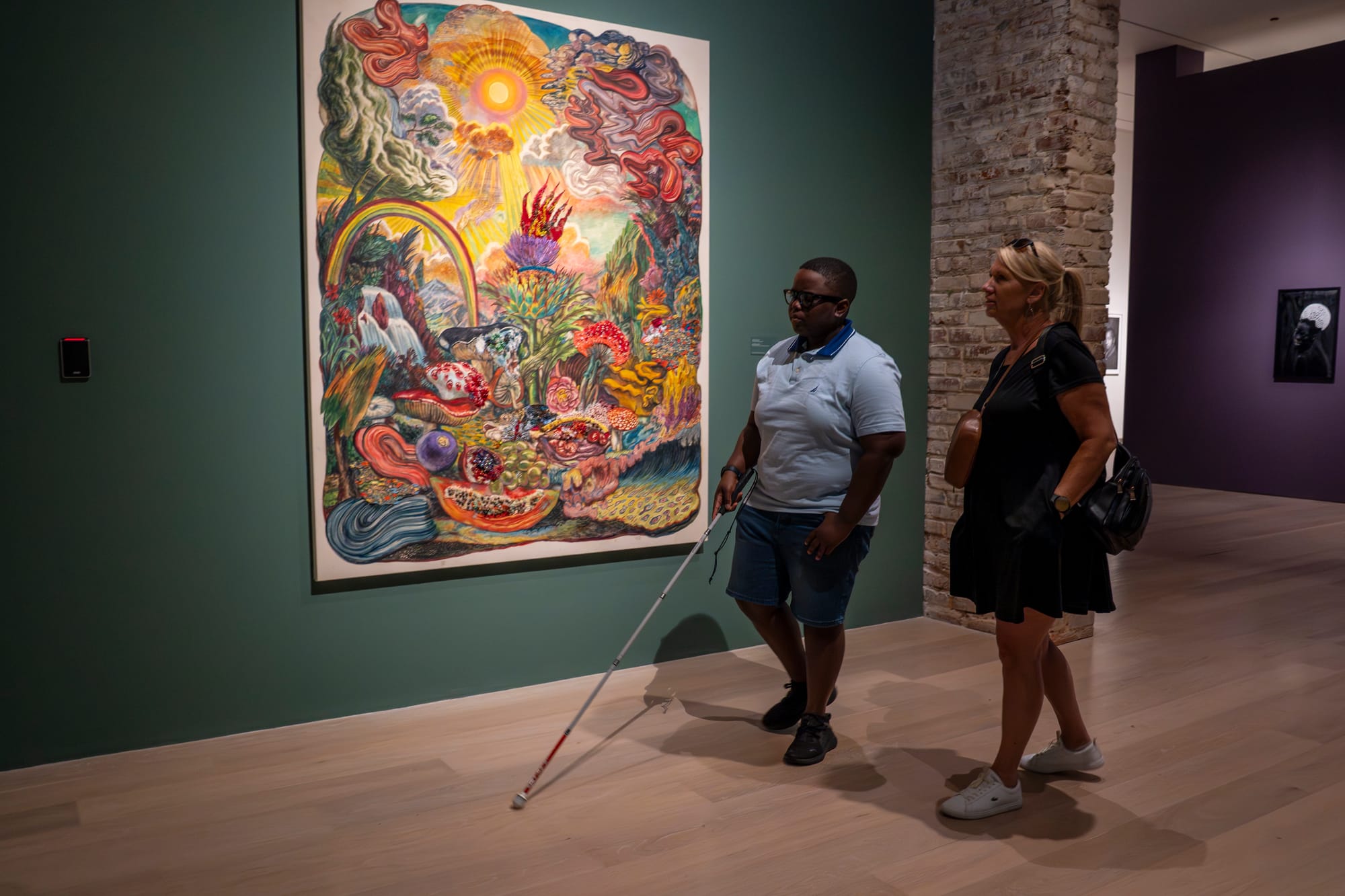
Why Savannah Works
What makes Savannah special for accessibility isn’t just ramps and restrooms—it’s the whole experience. Downtown is compact and easy to navigate, with short distances between attractions and shaded squares that offer natural resting spots. Locals are known for their friendliness, and the city’s hospitality industry is leaning into accessibility more each year. Add in ships gliding by on the river, a thriving food scene, and cultural experiences at every turn, and you’ve got a city that feels both historic and inclusive.
Quick Accessible Tips for Savannah
- Stay downtown. Savannah is compact, and being central keeps most attractions, squares, and restaurants within easy rolling distance.
- Decide if you need a car. If you’re planning to stick to downtown, shuttles, ferries, and the Old Town Trolley may cover your needs. For trips to Skidaway Island or outside the city, an accessible rental car makes things simpler.
- Plan for the heat. Summers get hot and humid. Bring water, take breaks in the shade, and enjoy those iconic squares—they’re as practical as they are beautiful.
- Book ASL interpreters early. Like in most cities, arranging ahead ensures services are available when you need them.
- Check event schedules. Savannah has events year-round, which can add fun but also crowds. Planning ahead helps you know what to expect.
Plan Your Accessible Visit
Savannah may surprise you. It’s not without challenges, but with a destination verified through Wheel the World, accessible attractions, and a city working to improve, it’s more accessible than you think—and we’ve shown you the proof.
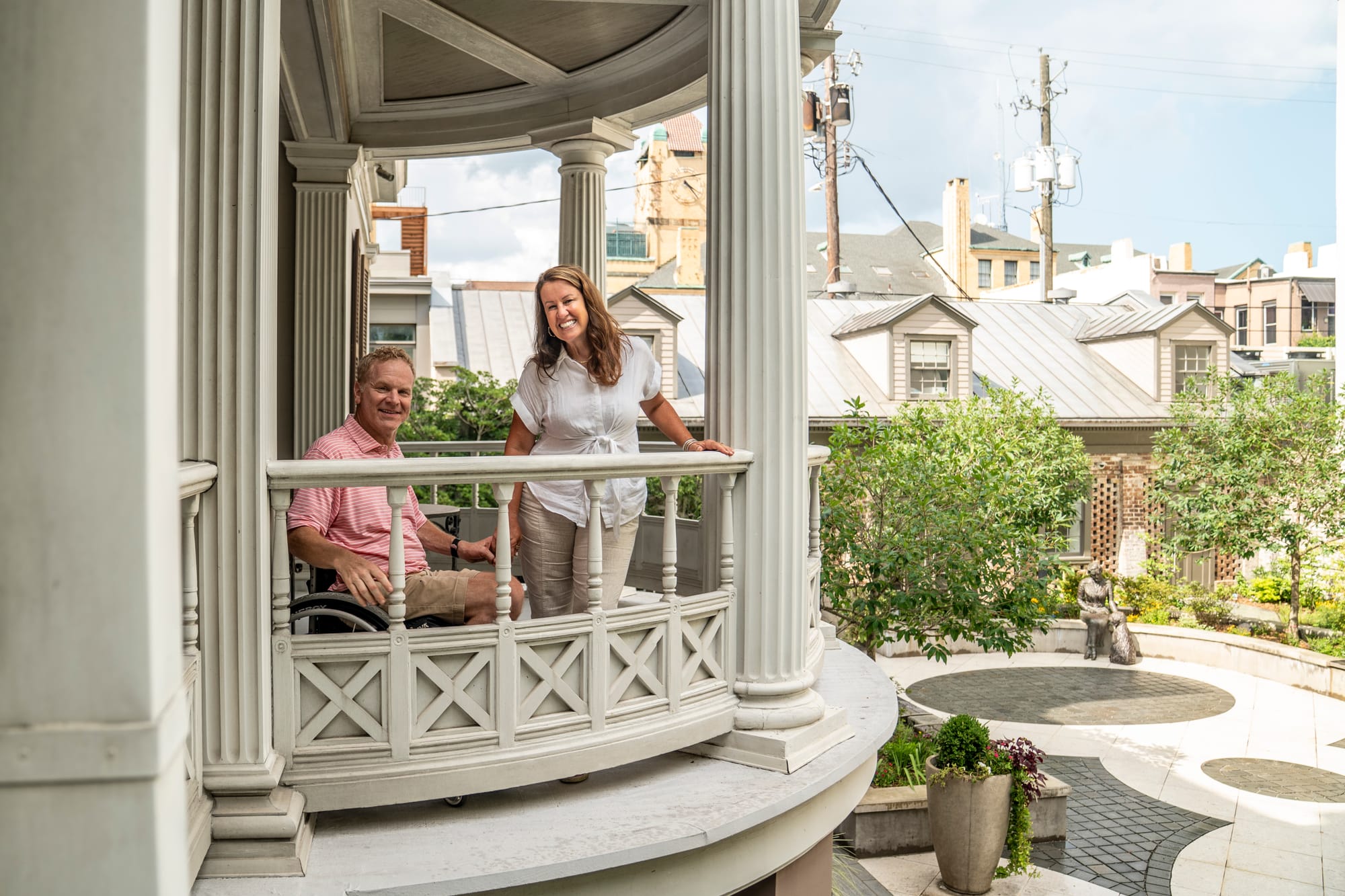
Visit Savannah With Peace of Mind
Find hotels, things to do, and restaurants with verified accessibility
Plan your visit

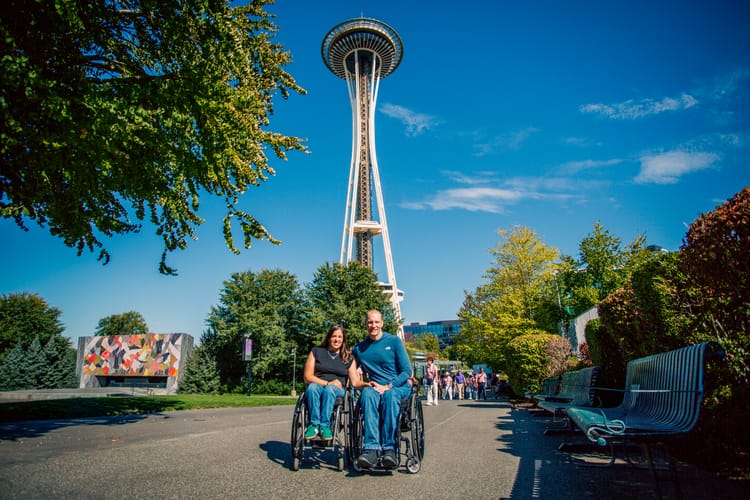
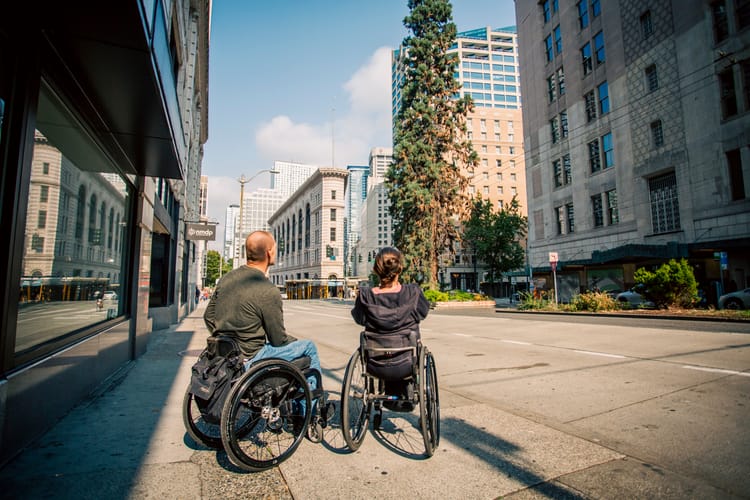

Comments ()